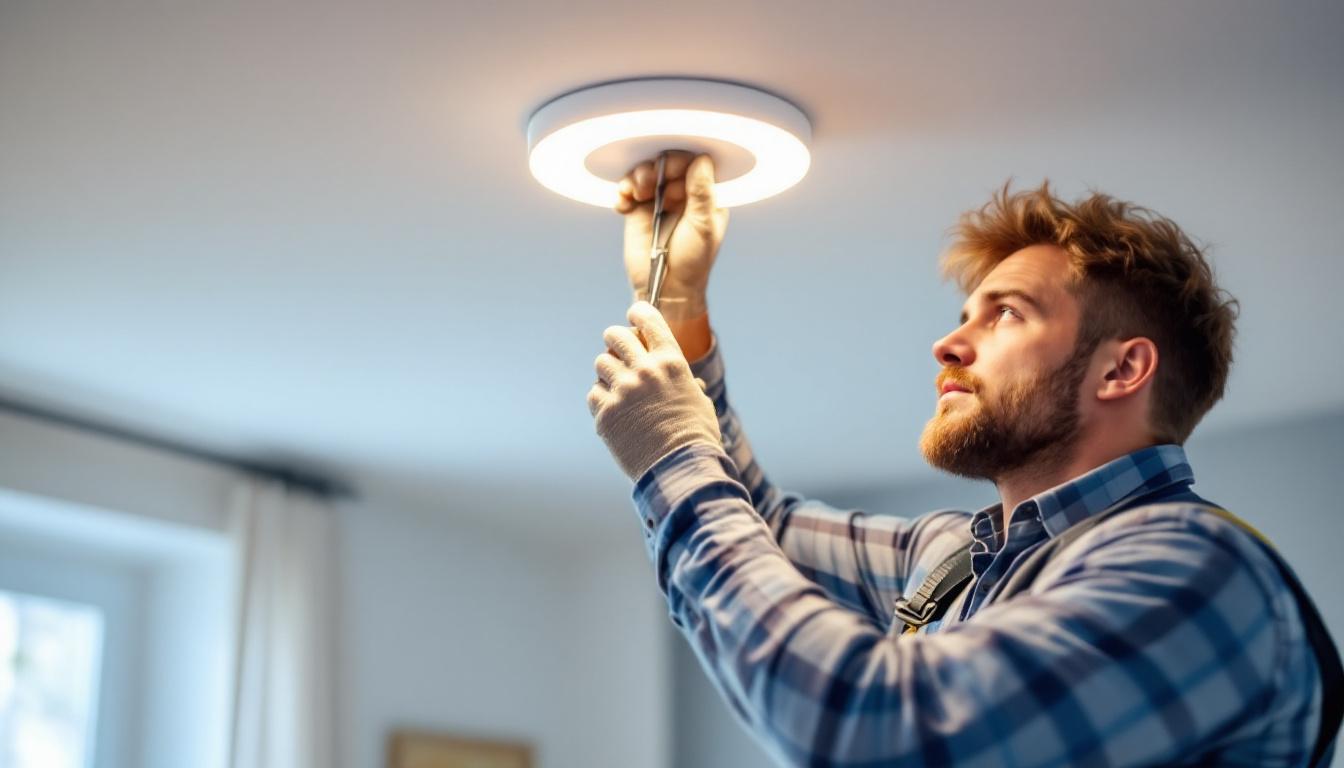
In the realm of construction and design, lighting plays a crucial role in enhancing aesthetics, functionality, and safety. For lighting contractors, understanding the nuances of this field is essential to delivering exceptional results. This article delves into the essential facts that every lighting contractor should know, providing insights into design principles, installation techniques, and the latest trends in lighting technology.
Lighting design is more than just placing fixtures around a space; it involves a thoughtful approach to how light interacts with the environment. By grasping the fundamental principles of lighting design, contractors can create spaces that are not only visually appealing but also practical.
Layering light refers to the use of multiple light sources to create a balanced and dynamic environment. Typically, this involves three types of lighting: ambient, task, and accent. Ambient lighting provides overall illumination, task lighting focuses on specific areas for activities like reading or cooking, and accent lighting highlights architectural features or artwork.
Effective layering can transform a space, making it feel warm and inviting. Contractors should consider the purpose of each room and the activities that will take place there when designing a lighting scheme. This approach not only enhances the functionality of a space but also contributes to its overall aesthetic appeal. For example, in a living room, a combination of soft ambient light from ceiling fixtures, bright task lighting from table lamps, and subtle accent lighting on artwork can create a harmonious environment that caters to relaxation and social interaction.
Color temperature, measured in Kelvin (K), plays a significant role in how a space feels. Warmer light (around 2700K to 3000K) creates a cozy atmosphere, ideal for residential settings, while cooler light (above 4000K) is often preferred in commercial spaces for its energizing effect.
Understanding the psychology of color temperature allows contractors to select appropriate fixtures that align with the intended mood of each space. For instance, using warmer tones in a restaurant can enhance the dining experience, while cooler tones in an office can promote alertness and productivity. Additionally, the choice of color temperature can influence the perception of space; warmer lights can make a room feel smaller and more intimate, while cooler lights can create an illusion of spaciousness, making them ideal for larger areas or open-plan designs.
Moreover, the interplay of color temperature with natural light throughout the day can further enhance a room’s ambiance. As daylight changes, so too can the lighting scheme, allowing for a dynamic environment that adapts to the time of day. By incorporating dimmers and smart lighting systems, contractors can provide users with the ability to adjust the color temperature and intensity, thus tailoring the atmosphere to suit different moods and activities, whether it’s a lively gathering or a quiet evening at home.
Proper installation techniques are crucial for ensuring that lighting systems function effectively and safely. Lighting contractors must be well-versed in various installation methods to meet the specific needs of each project. A thorough understanding of the environment and the intended use of the lighting can make a significant difference in the overall outcome, ensuring that the aesthetic and functional requirements are met without compromise.
Electrical wiring is a fundamental aspect of lighting installation. Contractors must adhere to local codes and regulations to ensure safety and compliance. This includes understanding load calculations, circuit requirements, and the appropriate use of transformers for low-voltage systems. Moreover, they should also be aware of the latest energy efficiency standards, which may dictate the use of specific types of wiring or fixtures that minimize energy consumption while maximizing output.
Additionally, contractors should be familiar with the different types of wiring methods, such as conduit and cable systems, to determine the best approach for each project. Proper wiring not only ensures safety but also enhances the longevity and performance of the lighting fixtures. For instance, using high-quality, insulated wiring can prevent overheating and reduce the risk of electrical faults, which is particularly important in commercial settings where lighting systems are often in use for extended periods. Furthermore, the integration of smart technology into lighting systems is becoming increasingly popular, and contractors must be equipped with the knowledge to install and configure these advanced systems effectively.
Placement of fixtures is vital for achieving the desired lighting effect. Contractors should consider factors such as ceiling height, room dimensions, and the purpose of the space when determining fixture locations. For example, in a kitchen, task lighting should be positioned directly over work areas to provide adequate illumination. In contrast, ambient lighting in a living room may require a more dispersed approach to create a warm and inviting atmosphere. Understanding the nuances of different spaces allows contractors to tailor their installation techniques to enhance both functionality and aesthetics.
Alignment is equally important; fixtures should be installed level and at the correct angles to avoid glare and ensure even light distribution. Taking the time to carefully plan and execute fixture placement can significantly enhance the overall lighting quality in a space. Additionally, contractors should consider the use of dimmers and adjustable fixtures, which can provide versatility in lighting design. This adaptability allows users to modify the ambiance according to their needs, whether it’s for a lively gathering or a quiet evening at home. Attention to detail in alignment and placement can transform a room, making it not only more visually appealing but also more practical for everyday use.
The lighting industry is continuously evolving, with new technologies and trends emerging regularly. Staying informed about these developments is essential for lighting contractors who wish to remain competitive and provide the best solutions for their clients.
Smart lighting has gained immense popularity in recent years, offering homeowners and businesses the ability to control their lighting remotely through smartphones or voice-activated devices. This technology allows for customizable lighting scenes, energy monitoring, and even automation based on occupancy.
Contractors should familiarize themselves with various smart lighting products and systems, as well as their installation requirements. Educating clients about the benefits of smart lighting can also lead to increased sales and customer satisfaction.
With a growing emphasis on sustainability, energy-efficient lighting solutions are becoming a standard expectation among clients. LED technology has revolutionized the industry, offering longer lifespans and lower energy consumption compared to traditional incandescent bulbs.
Contractors should prioritize energy-efficient options in their designs and educate clients on the long-term cost savings associated with these products. Additionally, understanding rebates and incentives for energy-efficient installations can provide added value to clients and enhance a contractor’s reputation as a knowledgeable professional.
Safety is paramount in the lighting industry, and contractors must adhere to strict standards and regulations to ensure the well-being of their clients and workers. Familiarity with safety protocols is essential for successful project execution.
Each region has specific electrical codes and regulations that govern lighting installations. Contractors must stay updated on these codes to ensure compliance and avoid potential legal issues. This includes understanding requirements for wiring, fixture types, and energy efficiency standards.
Regular training and certification can help contractors remain informed about changes in local codes and best practices, ultimately enhancing their credibility and reliability in the industry.
Implementing safety protocols during installation is crucial for preventing accidents and injuries. Contractors should ensure that all team members are trained in safety practices, including the proper use of personal protective equipment (PPE), safe ladder usage, and electrical safety measures.
Additionally, conducting pre-installation safety assessments can help identify potential hazards and mitigate risks before work begins. Creating a culture of safety within the team not only protects workers but also fosters a professional reputation among clients.
Effective communication with clients is essential for successful project outcomes. Lighting contractors must be able to convey complex information in an understandable manner, ensuring that clients feel informed and confident in their choices.
From the initial consultation to project completion, setting clear expectations is vital. Contractors should outline the scope of work, timelines, and potential challenges upfront to avoid misunderstandings later in the process.
Regular updates throughout the project can also help maintain transparency and build trust. By keeping clients informed, contractors can address concerns promptly and ensure a smoother project experience.
Clients often have varying levels of knowledge about lighting options and technologies. Taking the time to educate them on different types of fixtures, control systems, and design principles can empower them to make informed decisions.
Providing visual aids, such as mood boards or lighting samples, can also enhance the educational process. By fostering a collaborative environment, contractors can create a sense of ownership for clients, leading to greater satisfaction with the final results.
For lighting contractors, mastering the essential facts of the industry is crucial for success. From understanding design principles and installation techniques to staying informed about emerging trends and safety standards, a comprehensive knowledge base is key to delivering exceptional lighting solutions.
By prioritizing effective client communication and education, contractors can enhance their reputation and build lasting relationships with clients. As the lighting industry continues to evolve, staying adaptable and informed will ensure that contractors remain at the forefront of this dynamic field.
Ultimately, the goal of any lighting contractor should be to create spaces that are not only functional but also inspire and elevate the human experience. Embracing the essential facts outlined in this article will pave the way for success in the ever-changing world of lighting design and installation.
Ready to elevate your lighting projects with the highest quality fixtures at unbeatable prices? Look no further than LumenWholesale, where we provide contractors with spec-grade lighting products that meet the highest industry standards. Say goodbye to inflated markups and hello to superior lighting solutions that fit your budget. With free shipping on bulk orders, LumenWholesale is your go-to source for premium lighting without hidden fees or compromises. Don’t miss out on the perfect blend of quality, affordability, and convenience. Visit Wholesale Lighting at the Best Value today and light up your next project with confidence.

Discover how retro LED lamps can revolutionize your lighting projects by enhancing efficiency and style.

Discover the essentials of can light trim kits with our comprehensive guide tailored for lighting contractors.

Explore the pros and cons of traditional office lighting fixtures versus innovative alternatives.

Discover the ultimate checklist for lighting contractors seeking affordable LED tape lights.